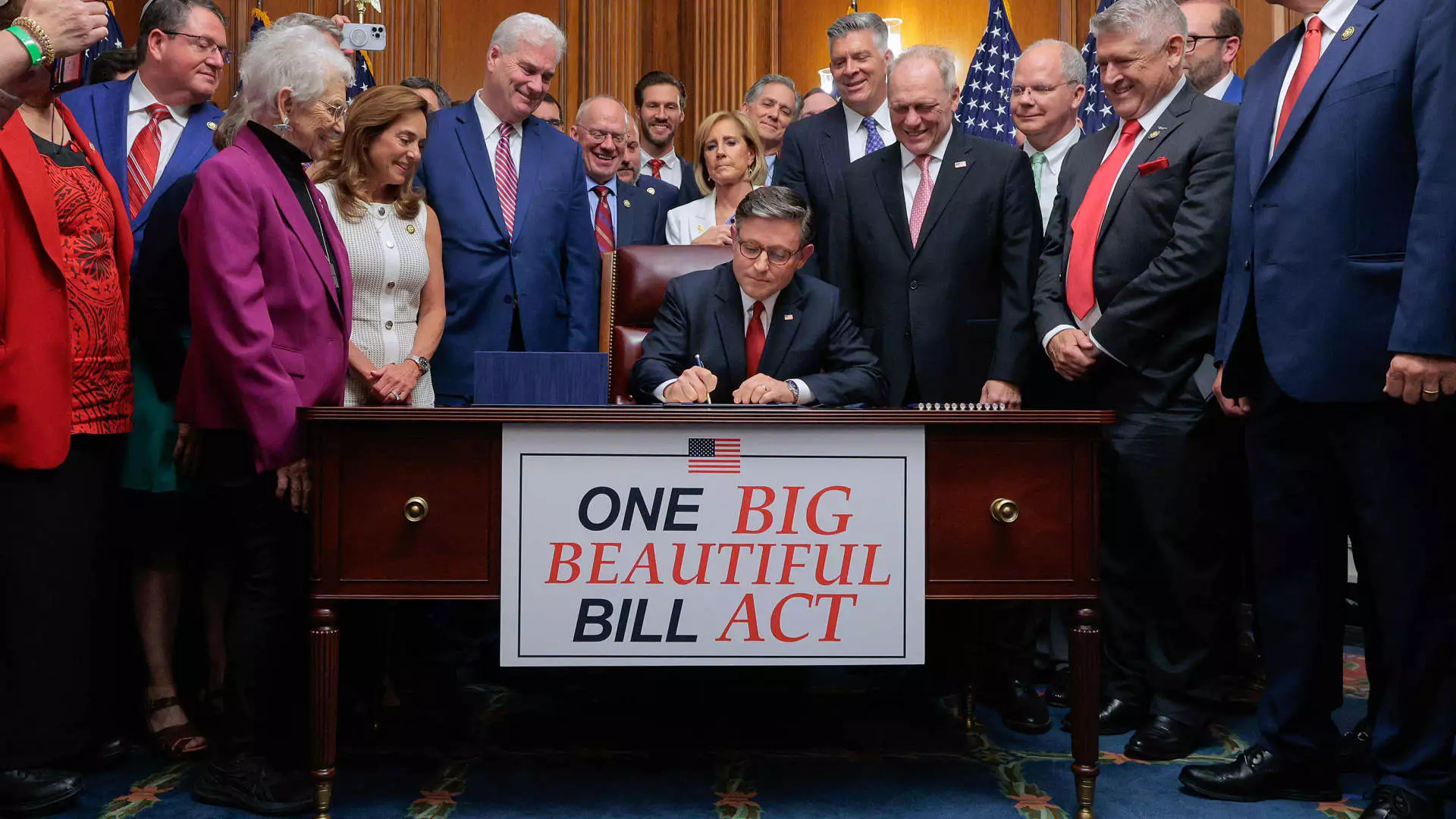In recent weeks, the buzz surrounding President Donald Trump’s sweeping tax law has been deafening. Promoted as a boon for “working families,” the legislation boasts claims of lower taxes and enhanced deductions. Yet, beneath the surface lies a complex web of unintended consequences and structural biases that threaten to undermine economic fairness. While the law attempts to portray itself as a victory for the middle class, a deeper analysis reveals that its impact may widen inequalities rather than bridge them.
The so-called “big beautiful bill” emphasizes hypothetical gains—larger standard deductions, modest increases in child benefits, and temporary deductions for certain demographics. But these superficial improvements obscure the fact that many of these benefits are short-lived, targeted on specific income brackets, or even strategically designed to benefit high earners under the guise of fairness. This selective generosity suggests a language designed to placate working families while cloaking a preference for the wealthy and affluent.
The Illusion of Tax Relief: Who Truly Wins and Who Loses?
While the legislation solidifies Trump-era tax cuts, it predominantly favors the wealthy, high-income households, and property owners. The notable increase in the SALT deduction cap, rising to $40,000, is a classic example. Although lauded as a benefit for homeowners in high-tax states, the 45.5% “SALT torpedo” exposes a disturbing reality: it disproportionately benefits those with substantial incomes, effectively subsidizing the tax strategies of the wealthy—who can leverage property and state taxes—while offering less tangible relief to middle or lower-income families.
Moreover, the temporary deductions and credits—such as the $6,000 boost for seniors or new deductions for tip income—are like bandages on a deeper wound: the systemic inequality embedded in our tax structure. As the benefits are phased out or tied to income thresholds, they tend to favor higher earners who can better exploit these provisions, leaving the working class either undercompensated or vulnerable to future policy rollbacks.
The Structural Flaws Behind Surface-Level Benefits
What the law largely fails to acknowledge is that tax policy cannot—nor should it—be an isolated instrument for economic justice. Without comprehensive income redistribution, these “benefits” are merely smoothing out the edges of a fundamentally biased system. The increase in standard deductions and child benefits might sound appealing, but they are insufficient fixatives in an economy where wealth inequality is glaringly obvious.
The temporary nature of many provisions reveals an unsettling truth: these aren’t pillars of an equitable economy but strategic political tokens meant to garner votes and defend existing power structures. For example, allowing higher SALT deductions only within certain income brackets reinforces a cycle where the social and economic advantages are concentrated at the top. Meanwhile, the looming expiration of the enhanced ACA subsidies threatens to push millions into health insecurity, exposing a stark failure to support the most vulnerable segments of society.
The Hidden Costs of the Policy’s Design
Beyond the immediate tax implications, this legislation subtly shifts the burden onto middle and lower-income Americans through indirect effects. Reduced government revenues may translate into cuts to social programs, healthcare, or education—services that disproportionately serve and benefit working-class families. The legislation’s inability to address the root causes of economic disparity—such as housing affordability, healthcare access, and equitable wage growth—renders its supposed benefits superficial.
Furthermore, the strategy of positioning tax breaks as “wins” for “working families” ignores the structural barriers many face daily. Tax credits and deductions, while helpful in some cases, do little to counteract the systemic issues that perpetuate income inequality. Instead, they provide false reassurance—glossing over the need for more robust, progressive policies that genuinely distribute wealth and opportunity.
A Call for Genuine Economic Justice
From a center-left perspective, what is desperately needed is a reimagining of tax policy that prioritizes fairness over superficial relief. Instead of complex, gimmicky deductions aimed at high earners, policymakers should focus on core reforms—such as progressive taxation, universal healthcare, affordable housing, and educational opportunities—that genuinely level the playing field.
This legislation, with its patchwork of benefits and loopholes, exemplifies the danger of allowing policy crafted under political expediency to define our economic future. True reform must go beyond temporary fixes and superficial narratives. It should be rooted in the acknowledgment that economic fairness hinges on systemic change, not just adjusting the odds in favor of the already privileged.
Ultimately, the “big beautiful bill” unravels as a carefully marketed illusion—one that promises prosperity but delivers inequality. The challenge remains: to build an economy that works not just for those who already hold power but for all members of society, ensuring fairness is the true foundation of growth rather than an afterthought dressed up in political rhetoric.

